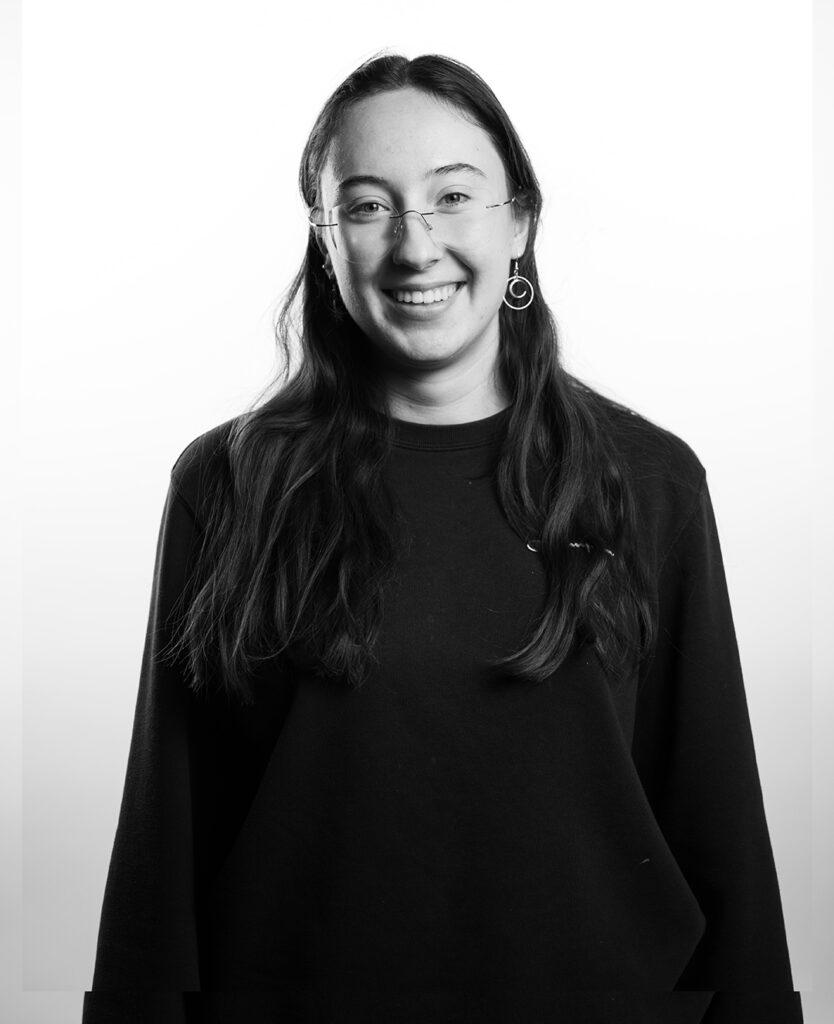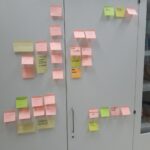Integrated product design
At a glance
Faculty
Academic degree
Bachelor of Arts (B.A.)
Form of study
Full-time
Standard period of study
7 semesters (incl. practical semester), 210 ECTS
Place of study
Language of instruction
German
Start of studies
Winter semester (October 01)
Admission requirements
University entrance qualification, entrance qualification for universities of applied sciences, vocational qualification or foreign educational certificate; aptitude test
Costs
Semester fee (incl. semester ticket)
Semester abroad
Possible as a theoretical or practical semester
Studying with a practice partner
Accreditation
accredited by the Accreditation Council
Homepage of the study program
Registration
from May 02 – June 15
Profile of the degree program
Imagine that your studies combine creativity with a variety of exciting disciplines. This is exactly what awaits you on this degree course: here you combine design subjects with areas such as business, technology, ecology and social issues. You can bring in your own interests and develop them – whether you are enthusiastic about the design of church chairs or high-tech bicycles, whether you want to design a running shoe or a musical instrument. We promote your talent in a targeted and individual way.
At the same time, you will acquire valuable knowledge through Coburg's training standards, which are tailored to the requirements of the job market. You will be optimally prepared for your professional future. Design studies have a long tradition in Coburg – we have been training creative minds in a practical way here since the winter semester of 1998/99.
What we value
Realistic conditions
In Coburg, you learn to design without "training wheels". This means that you train under realistic conditions right from the start – instead of pondering products in theory in an academic ivory tower.
High standards ensure study quality
The binding principles of the training guarantee the high standard of Coburg graduates. Word of this has now spread to many design offices and creative departments in companies.
Study internationally
Coburg University of Applied Sciences offers the opportunity to complete a study or practical semester abroad. To this end, Coburg University of Applied Sciences maintains relationships with foreign partner universities. Further information is available from the university's Study Abroad service.
Course content and schedule
Product design is a multifaceted discipline. That is why the course offers interdisciplinary teaching. We attach great importance to a solid technical education. The curriculum includes subjects such as materials, design theory, mechanics, lightweight construction, ergonomics, technical drawing and new production technologies, such as digitalized manufacturing. The course has its own materials laboratory where you can familiarize yourself with a wide range of materials. Business administration is also part of the curriculum. You will learn how to think commercially, especially in numerous projects with companies. Products are developed here under "real" conditions. Some student designs have already made it onto the shelves of retailers!
Theoretical foundations
Specifically, the Integrated Product Design degree program is about:
- Design basics
- Representation methods, computer-aided representation
- Design and construction
- Design history
- Technical mechanics, materials
- Fundamentals of business administration, marketing
- Perceptual psychology
Real product development
From the 3rd semester onwards, for example, you will design real products in collaboration with companies. These could be medical devices, guest bathrooms, multimedia products or coffee machines. We cooperate with a number of very different companies and research institutes. You will be closely supervised in these projects. You will receive weekly feedback and learn more than just design. This includes research, teamwork and time management. You will also work under time pressure – just as you will later in your career. We don't believe in letting creative people just tinker freely during their studies – without any framework conditions. This only leads to many talented people being underchallenged and later having difficulties gaining a foothold in real professional life. Moreover, experience shows that only those who know the limits – economic or technical – can overcome them and set off for new shores: In the form of future-oriented products and services.
Practice during studies
Workshop internship
Intellectual flights of fancy in design must always be measured against reality. Basic training in our workshops is therefore integrated into the first and second semesters, amounting to 18 semester hours per week. Here you will familiarize yourself with techniques such as turning, milling and drilling. You will learn "craftsmanship" in the truest sense of the word – your hands will create sculptures, shapes and objects from a wide variety of materials. In the workshops, you will learn all aspects of model making, including the use of computer-aided processing machines.
Practical semester
The 5th semester is a complete internship semester of 18 weeks, which you spend in a design office – worldwide. There you can put into practice much of what you have learned during your studies. This is accompanied by a practical seminar.
Job & Career

We are primarily concerned with giving young creative talent a realistic idea of their future work. This also means, for example, that designers are increasingly providing companies with comprehensive advice. "How can we reach older people with our products?", "How can design improve the image of our company?" – questions like these are being asked more and more frequently. This calls for creative strategists with managerial qualities who are intellectually capable of thinking beyond pure design.
With their highly qualified work, designers play a significant role in the success of companies. We teach you that design has a high cultural and economic value – and therefore also its price. For us, this is also part of our practice: training self-confident young people who are aware of the importance of their work and do not sell good ideas below value.
Do another master's degree!
After successfully completing their Bachelor's degree, good graduates have the opportunity to gain further qualifications with a Master's degree. Coburg University of Applied Sciences offers a Master's degree in Design for this purpose.
Insights
If you would like to find out more exciting information and insights, you can find out even more at www.integriertesproduktdesign-coburg.de!
You are currently viewing a placeholder content from YouTube. To access the actual content, click the button below. Please note that doing so will share data with third-party providers.
More InformationYou are currently viewing a placeholder content from YouTube. To access the actual content, click the button below. Please note that doing so will share data with third-party providers.
More InformationRegistration and aptitude test
Admission requirements
Prospective students with a general higher education entrance qualification, subject-specific higher education entrance qualification or entrance qualification for universities of applied sciences and – under certain conditions – prospective students without an Abitur can apply. The degree program is not admission-restricted, i.e. there is no numerus clausus (NC). Instead, an aptitude test must be taken.
Suitability test
Applicants for the Integrated Product Design degree program are selected via an aptitude test. It is an assessment procedure to determine the artistic, creative and constructive skills of the applicants as well as their social competence. In addition to general skills such as a high level of motivation, commitment and willingness to perform, you need to have a figurative and spatial imagination and the ability to express yourself creatively. Components of the aptitude test will include analysis of function and effect, the connection between handling and design and the link between use, material and form. During the aptitude test, we are particularly interested in your creative design skills. An interview is also part of the aptitude test. It offers applicants the opportunity to compare their own skills with the requirements of the degree program.
Dates
- Fill out and submit online application: May 2 to June 15 – certificates can be submitted later
- Invitation to the two-day aptitude test including homework will be sent after June 15 via the application portal, notification by e-mail
- Two-day aptitude test in Coburg, you bring your homework with you
- You will usually receive your result the following week via the online portal.
Curriculum and examination regulations
The study plan provides an overview of the course of study:
The module handbook provides information on the content of the individual modules:
The study and examination regulations form the legal basis of the degree program. Questions about the content of the course will be answered by the course advisor Prof. Natalie Weinmann.
Further information on the content of the course can be found on the website of the Integrated Product Design course.
Student ambassador

I'm Ada Doering and I'm a student ambassador for the Integrated Product Design course. As I study at Coburg University of Applied Sciences, I can answer your questions directly. So if you want to know what the course is all about or what it's like to live in Coburg, just send me an email: Ada.Doering@stud.hs-coburg.de
Latest news
Drinking to go, on the go with coffee, tea and co. design workshop at SBBS Sonneberg
Together with the Integrated Product Design course at Coburg University of Applied Sciences, Year 12 pupils from SBBS Sonneberg have developed the "design process".
The path led from the presentation of the topic, through research and sketches to initial ideas, right up to three-dimensional models and mock-ups. We highlighted the topic of design and product development as part of the workshop.
At the final presentation with guests from the school, the participants were able to present their results in detail.
Our thanks go to Mrs. Christine Roß for the great organization.
Lilli Blaschke ip2,
FOL Ralph Neisser
Graduate product designer

The design process is worked out. Photo: private

The schoolgirls do research. Photo: private

Models and mock-ups are a must. Photo: private

The final presentation also impressed the guests. Photo: private


